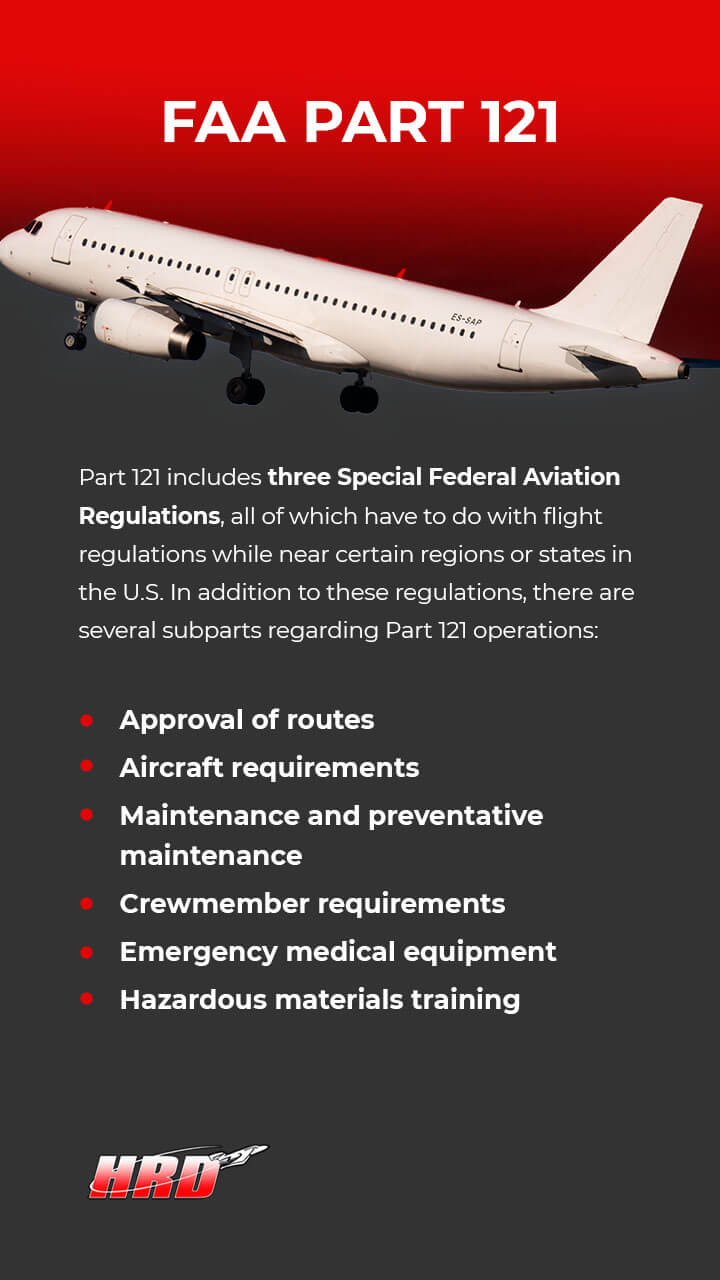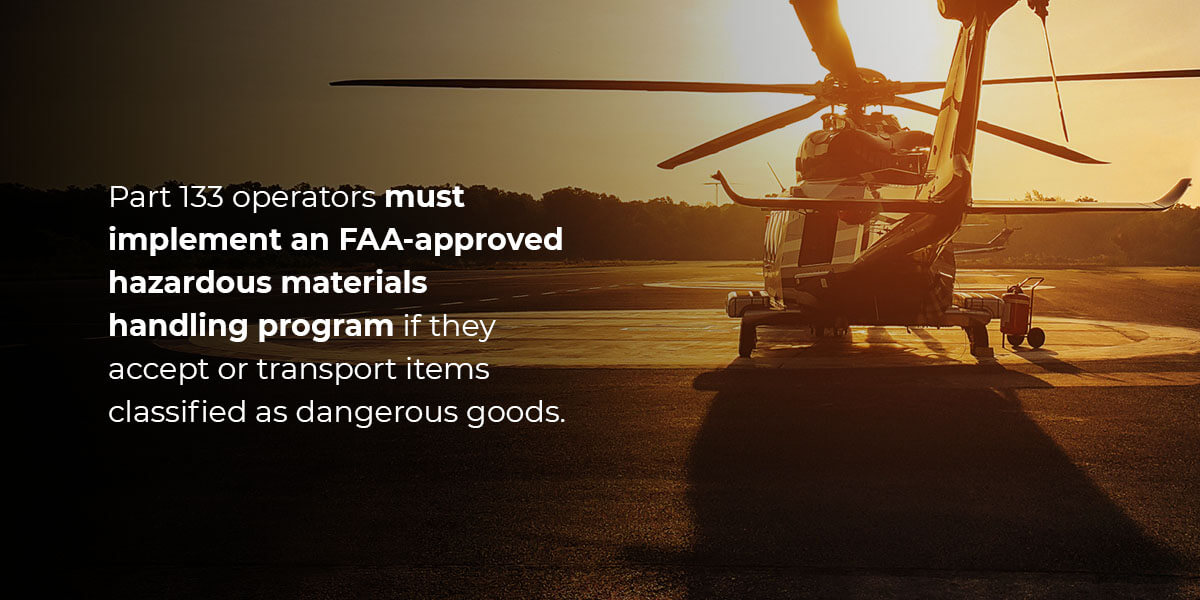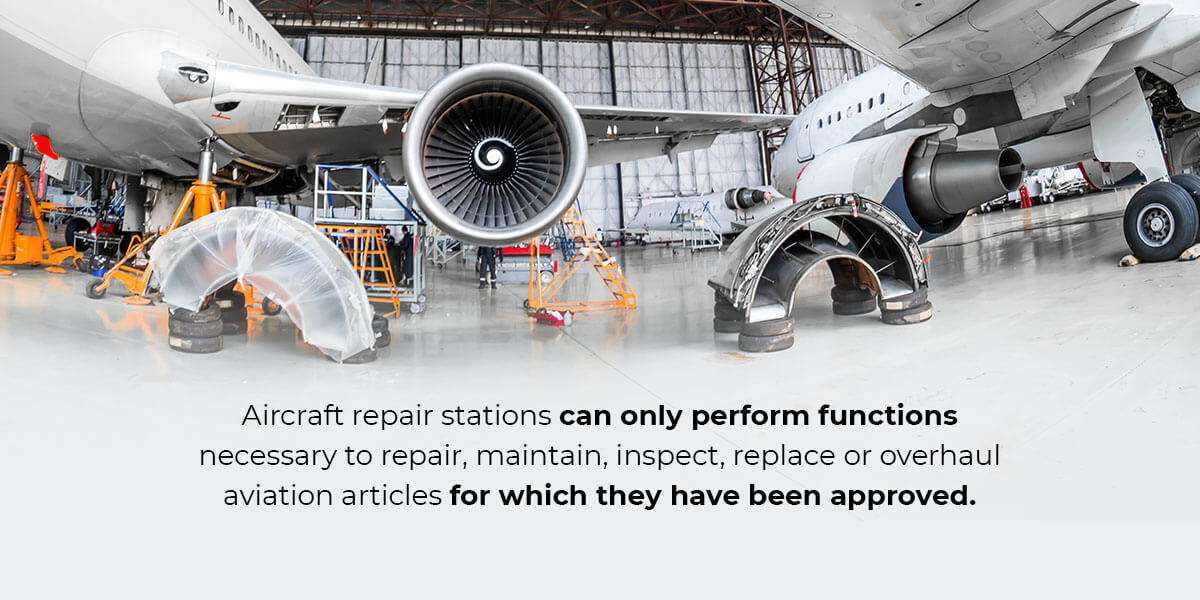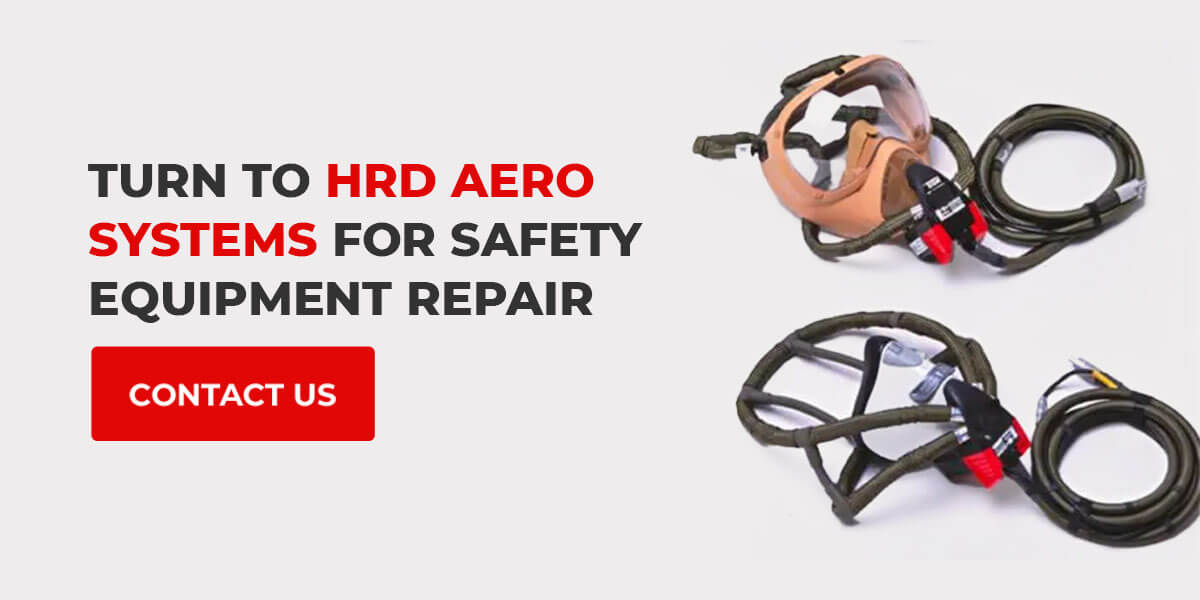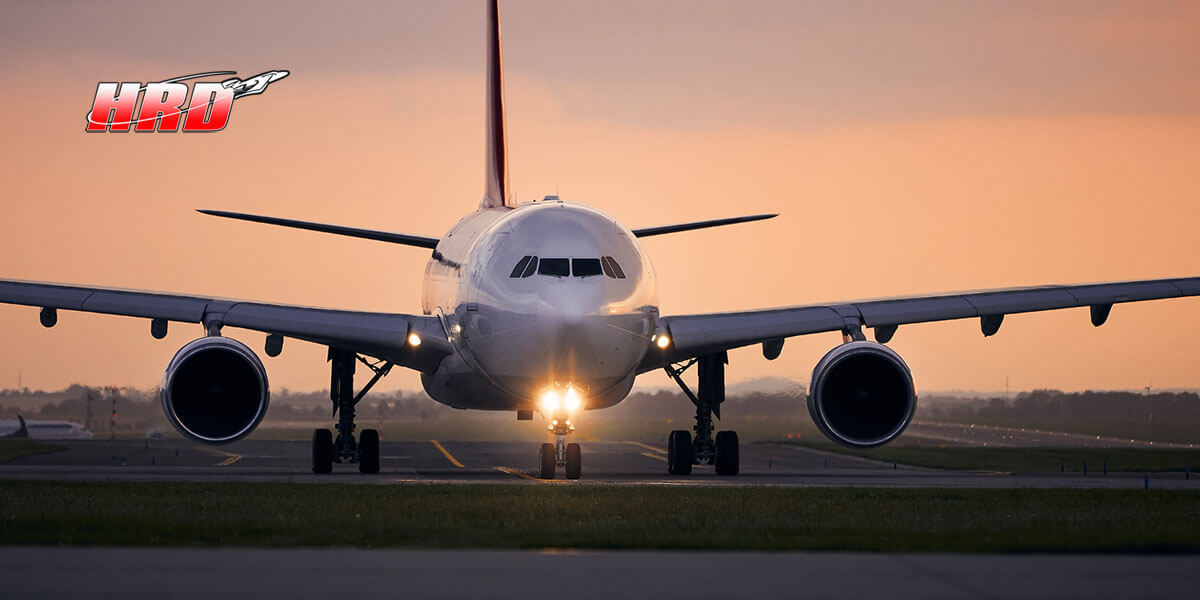
The Federal Aviation Administration (FAA) is an essential player in aviation safety. The Federal Aviation Act established the FAA in 1958 to regulate aviation and promote safety. The FAA has played a significant role in the history of aviation safety ever since, establishing air traffic rules, developing manufacturing standards and certifying repair stations.
Part of the FAA’s duties is overseeing various types of flight operations. According to Title 49 of the United States Code (49 U.S.C.), air carriers must obtain two certifications from the U.S. Department of Transportation (DOT) — an Air Carrier Certificate and Operations Specifications from the FAA. These operations are outlined in Title 14 of the Code of Federal Regulations (CFR). Charter companies, aircraft owners and airlines must comply with the applicable parts regarding the operation of their aircraft.
Each part of Title 14 contains different regulations about aircraft maintenance, inspection and more. Learn more about the types of airline operations and their implications.
FAA Part 91
Called General Operating and Flight Rules, Part 91 of 14 CFR includes general flight regulations. These regulations only govern the operation of private aircraft rather than aircraft used for commercial charters.
A significant section of Part 91 is Section 91.1085, Hazardous Materials Recognition Training. This section states that no one may perform any duties related to handling or carrying hazardous materials unless they have received training in dangerous materials recognition. Hazardous materials are defined in 49 CFR 171.8 as any material or substance that poses a risk to health and safety when transported. Private pilots may carry dangerous goods aboard their aircraft without being regulated as long as they are not transporting them as part of a commercial enterprise.
Here is an overview of the other most notable regulations for Part 91 operations:
- Emergency operation of air traffic control systems: Part 91 requires all aircraft operators to be familiar with air traffic controls and authorizes the Director of the Office of Air Traffic Systems Management to direct operations at specific airports and airspaces.
- The authority of the pilot in command: According to Section 91.3, the pilot in command has final authority about the aircraft’s operation.
- Civil aircraft airworthiness: All civil aircraft must be airworthy before operation, as outlined in Section 91.7.
- Flight rules: Part 91 Subpart B includes flight rules regarding flight crewmembers, use of safety belts, operation near other aircraft, right-of-way rules, aircraft speed and more.
- Instrument, equipment and certificate requirements: An aircraft’s instruments and equipment are regulated under Subpart C. Emergency locator transmitters, supplemental oxygen, altitude reporting equipment and terrain awareness systems are some of the instruments regulated in this section. Subpart C also outlines the certifications required for the operation of a civil aircraft.
- Maintenance: Regulations for aircraft maintenance, preventative maintenance and inspection are found in Subpart E.
FAA Part 119
Aircraft operators will find more specific regulations about aircraft operation in Part 119 of 14 CFR. This part is titled Certification of Air Carriers and Commercial Operators and addresses certification requirements for air carriers and operators transporting people and property for compensation. Part 119 applies to a broad spectrum of aircraft operations, whereas many other parts outlined below apply only to specific flight operations.
Part 119 also provides criteria for determining what other Parts of Title 14 are relevant to specific operations. In addition, Part 119 outlines general rules governing commercial aircraft operations and specifies the minimum personnel and experience required for certification.
A critical concept to grasp when exploring Part 119 is the difference between common and noncommon carriage. Common carriage refers to an aircraft operation that holds out its services to the public for compensation. Engaging in common carriage means that an air carrier or operator is willing to serve members of the public indiscriminately. This type of airline operation is the rule and noncommon carriage is the exception. Noncommon carriage is any aircraft operation for hire that does not involve a holding out to the public.
A few essential requirements for Part 119 operations include:
- Certifications and authorizations: Direct air carriers must be issued an Air Carrier Certificate, according to Section 119.5. This section also specifies situations in which an Operating Certificate may be issued instead.
- Regulations applicable to specific operations: Part 119 Subpart B contains guidance on the applicability of specific operating requirements to different types of flight operations. For example, commercial aircraft operators engaged in common carriage must comply with the rules in Part 121.
- Certificate application requirements: As outlined in Subpart C, people who wish to operate as an air carrier must meet specific qualifications to apply for certification.
FAA Part 121
The FAA grants authority to operate scheduled aircraft operations through a Federal Aviation Regulations Part 121 certificate. Part 121 contains operating requirements for regularly scheduled air carriers, including domestic, flag and supplemental operations. This certificate is generally issued to large airlines based in the U.S., cargo operators and regional air carriers.
Part 121 includes three Special Federal Aviation Regulations, all of which have to do with flight regulations while near certain regions or states in the U.S. In addition to these regulations, there are several subparts regarding Part 121 operations:
- Approval of routes: Certificate holders can find regulations for route selection, communications facilities, weather reporting facilities and service and maintenance facilities in Subpart E.
- Aircraft requirements: From aircraft airworthiness to equipment requirements, Subpart H contains regulations about testing and certifying aircraft.
- Maintenance and preventative maintenance: Aircraft maintenance and inspection requirements are found in Subpart L.
- Crewmember requirements: Regulations for flight crews, including minimum flight attendant requirements and emergency evacuation duties, are located in Subpart M. Crewmember and dispatcher training is outlined in Subpart N, while Subpart O contains qualifications for pilots and other crewmembers.
- Emergency medical equipment: According to Subpart X, aircraft must inspect emergency medical equipment regularly and make them accessible to crewmembers. However, this subpart does not require crewmembers to provide emergency medical care.
- Hazardous materials training program: To prepare certificate holders for transporting dangerous materials, Subpart Z includes instructions for hazardous materials training.
FAA Part 129
The Part of 14 CFR that applies to foreign air carriers and foreign operators of aircraft registered in the U.S. is Part 129. Foreign air carriers or operators who want to engage in common carriage or transport cargo in the U.S. must obtain a permit from the DOT under 49 U.S.C. The FAA also issues foreign air carrier operation specifications contained in Part 129. These permits enable foreign air carriers to operate aircraft to, from and transiting the U.S.
Part 129 includes several regulations applicable to foreign air carriers, including:
- General aircraft regulations: Foreign air carriers must abide by the general regulations contained in Subpart A, including its requirements for obtaining operations specifications, aircraft maintenance and communication and navigation equipment.
- Safety and airworthiness specifications: Foreign air carriers can find more specific information regarding aircraft safety in Subpart B, including inspections for aging aircraft and supplemental maintenance and inspection programs.
As with Part 121, Part 129 includes regulations regarding the safe handling and transporting of hazardous materials on aircraft. Part 129 air carriers are also subject to standards set forth by the International Civil Aviation Organization (ICAO). The ICAO has issued Technical Instructions (TI) for the Safe Transportation of Dangerous Goods by Air in Annex 18 of The Convention on International Civil Aviation, which regulates international aircraft operation.
Part 129 air carriers are closely inspected throughout their operation in the U.S. to ensure their compliance with hazardous materials handling standards. At multiple locations throughout the country and its territories, Hazardous Materials Aviation Safety Inspectors (HMASIs) conduct inspections of Part 129 air carriers. These air carriers are also assigned Hazardous Materials Principal Inspectors (HMPIs) to oversee their Hazardous Materials Programs and ensure air carriers are receiving proper training.
FAA Part 133
The FAA authorizes on-demand, external-load air service through a Part 133 certificate. Part 133, called Rotorcraft External-Load Operations, pertains to air carriers who use helicopters for various missions, ranging from placing an air conditioning unit on top of a skyscraper to transporting supplies to areas where conventional aircraft cannot maneuver.
Many air carriers engaged in Part 133 operations must take additional precautions during operation, especially when transporting hazardous materials or operating over a populated area. Part 133 provides standards for safe operation during these scenarios.
Part 133 operators must implement an FAA-approved hazardous materials handling program if they accept or transport items classified as dangerous goods. This program provides instruction on the safe handling of such items and training for crewmembers. These types of Part 133 operations must also obtain a Special Permit from Pipeline and Hazardous Materials Safety Administration and comply with regulations for the safe handling of hazardous materials found in 49 CFR and ICAO Technical Instructions.
Here are a few more regulations provided in Part 133:
- Part 133 certification rules: Requirements for obtaining a Part 133 certificate are found in Subpart B. This subpart explains the certificate’s duration, situations in which it can be suspended and requirements for knowledge and skills tests.
- Rotorcraft operation requirements: Regulations for the operation of rotorcraft during Part 133 operations are in Subpart C. Operators can find standards for emergency operation, general operating rules and crewmember training and testing requirements.
- Airworthiness: Information in Subpart D pertains to airworthiness requirements for rotorcraft engaged in Part 133 operations. These regulations include flight characteristic requirements, rotorcraft design specifications, operating limitations and aircraft markings.
FAA Part 135
FAA Part 135 pertains to air carriers operating on-demand, unscheduled air service, such as charter flights. These air carriers vary from large cargo planes to small aircraft. Many Part 135 operators provide valuable cargo and passenger transport services to remote areas. These operators also frequently handle hazardous materials and must meet certain safety requirements.
Applicants for a Part 135 certificate must determine the scope and size of operations they want to engage in before beginning the certification process, as operation requirements differ. There are two types of 14 CFR 135 certifications:
- Air carrier certificate: This certificate is for air carriers who will carry mail or conduct transportation between states or overseas.
- Operating certificate: An operating certificate is for applicants who will only conduct intrastate transportation.
Applicants can either conduct on-demand or commuter operations. On-demand operations have limits on the frequency of flight schedules. In contrast, commuter operations allow unlimited scheduled operations. Both operations may be conducted by rotorcraft or airplanes with a seating configuration of 30 or less or a payload capacity of 7,500 pounds. Neither on-demand nor commuter operations may be conducted in a turbo-jet airplane.
Part 135 includes several subparts that provide operating standards for those engaging in these operations:
- General aircraft operations: Operators must abide by requirements in Subpart A when operating unscheduled air service.
- Flight operations: Regulations for flight operations and inspections are found in Subpart B.
- Aircraft equipment: Air carriers engaging in Part 135 operations must ensure their aircraft meet the equipment and technology specifications in Subpart C.
- Flight crewmember requirements: Specifications regarding the qualifications and experience of pilots for Part 135 operations are located in Subpart E.
- Operating limitations: Certificate holders must comply with the flight and aircraft limitations outlined in Subpart I.
- Maintenance and preventative maintenance: According to Subpart J, certificate holders must perform regular maintenance and inspections on aircraft.
- Hazardous materials training: Regulations surrounding hazardous materials training programs for Part 135 operations are contained in Subpart K.
FAA Part 145
FAA Part 145 applies to aircraft repair station operators. Repair station facilities must meet the regulations in this part to become certified to perform maintenance and repair operations. The FAA issues a Part 145 certification to authorize repair stations to engage in aircraft inspection, repairs and alterations. These regulations are highly specific about who can perform what aspects of aircraft maintenance and who can approve alterations to return the aircraft to use after maintenance.
Aircraft repair stations can only perform functions necessary to repair, maintain, inspect, replace or overhaul aviation articles for which they have been approved. The FAA also issues ratings to certified repair stations based on the types of maintenance they perform. The six ratings that pertain to repair stations are:
- Airframe
- Powerplant
- Radio
- Propeller
- Instrument
- Accessory
Repair stations must abide by several regulations outlined in Part 145, including:
- General requirements: A definition of terms, requirements for certification and regulations regarding repair station records are found in Subpart A.
- Certification: The process for repair station certification is outlined in Subpart B.
- Repair station facilities and equipment: Repair stations must maintain sufficient workspace, equipment, tools and data. Those regulations are included in Subpart C.
- Personnel: Requirements for repair station personnel are in Subpart D. These personnel include supervisors, inspection staff and repairmen.
- Repair station operating rules: Facilities must also abide by the operating requirements in Subpart E regarding the repair station manual, recordkeeping, quality control and FAA inspections.
Turn to HRD Aero Systems for Safety Equipment Repair
Safety during aircraft operation is critical for crewmembers, passengers and cargo. Air carriers must ensure their operations comply with FAA Title 14 at all times along their routes.
When you need an aircraft safety equipment repair station, trust HRD Aero Systems. HRD is an FAA Part 145 repair station with over 33 years of experience providing world-class service repairing aircraft safety equipment. We provide “One-Stop Shopping” services to maintain fire extinguishers, inflatables and oxygen systems to FAA guidelines and ensure airworthiness. Our state-of-the-art facility allows us to quickly and effectively meet your needs.
Learn more about how HRD products and services can provide the utmost in safety by contacting us today.

